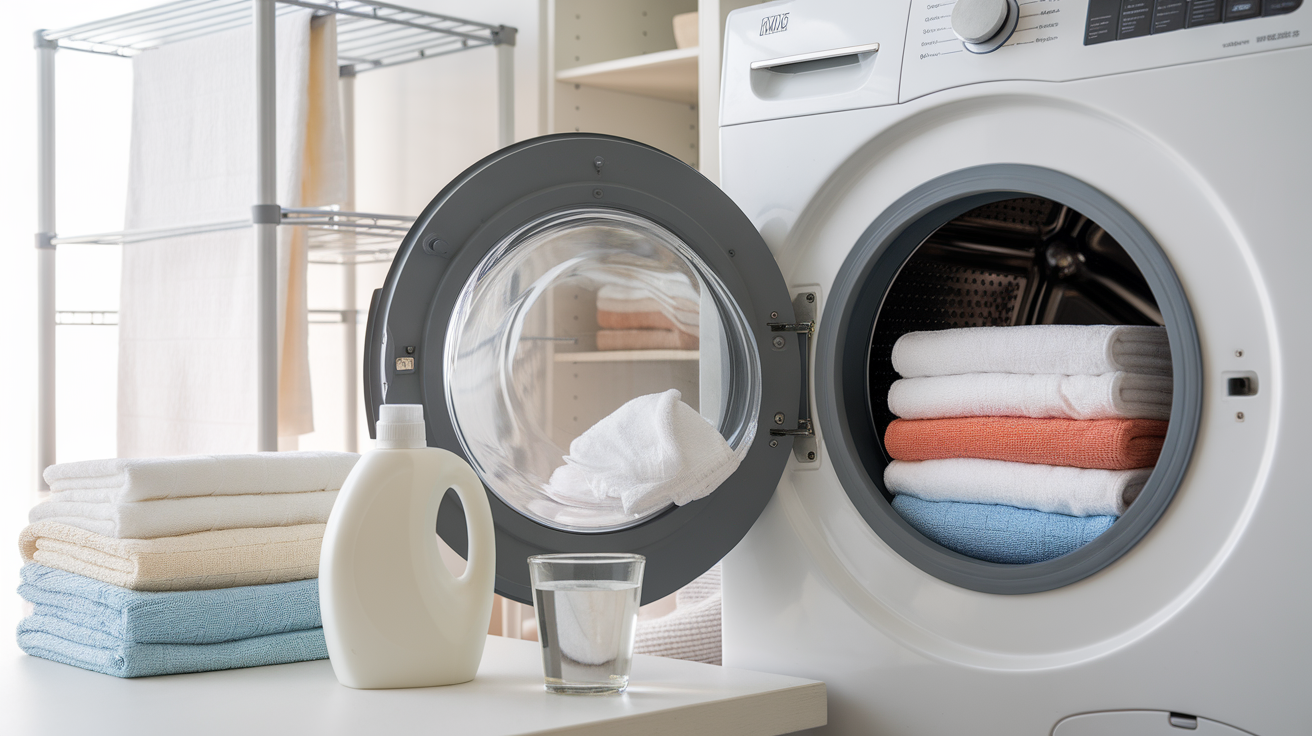When I first started doing laundry on my own, I thought tossing towels in with the rest of the clothes was good enough.
But over time, my once-soft, fluffy towels turned scratchy and lost their absorbency.
That’s when I realized washing towels isn’t just about getting them clean, it’s about treating them right.
Towels work hard every day, so it only makes sense to give them a little extra care.
Picking the correct washer settings can make all the difference in how long they last and how they feel after every wash.
In this guide, I’ll walk through the ideal washer settings, temperature choices, and drying tips that keep towels soft, fresh, and absorbent for the long haul.
How Often Should You Wash Towels?
Towels should be washed every three to four uses to prevent bacteria, oils, and mildew buildup.
Even if they look clean, damp towels can harbor germs if not washed promptly. Washing them regularly helps keep them fresh and preserves their softness.
When I buy new towels, I always wash them once before use to remove any leftover chemicals or coatings. This ensures better absorbency and prevents stiffness.
This simple step enhances towel performance and longevity, and it’s one I always recommend.
Choosing the Right Washer Settings
Picking the correct washer settings helps towels stay clean, soft, and long-lasting. I focus on the right cycle and water temperature to avoid damage and preserve their fluff.
Washer Cycle
I always start by selecting the right cycle because it really sets the tone for how towels come out of the wash.
The “Normal” or “Regular” cycle, sometimes labeled “Fast/Fast,” offers just the right amount of agitation and a thorough rinse, both important for cleaning thick terry cloth.
It’s a reliable go-to for everyday towel washing. But if my machine has a dedicated “Bulky” or “Towels” setting, I’ll switch to that.
These cycles are specifically designed to handle heavier items, using more water and a stronger spin to make sure the towels get fully clean and rinsed without getting weighed down.
Water Temperature
When washing white towels, I use hot water, around 60 °C or 140 °F. It helps sanitize the fabric and breaks down body oils and soap residue that build up over time.
For colored towels, I stick with warm water, usually about 40 °C or 104 °F. It’s gentle enough to prevent fading but still effective for cleaning.
If I’m dealing with towels that aren’t too dirty or I want to conserve energy, cold water paired with a quality detergent works surprisingly well.
It keeps colors bright and still gets the towels fresh without the extra energy cost.
Step-by-Step Guide to Washing Towels Properly
Keeping towels soft, fluffy, and absorbent requires more than tossing them into the washer. Follow these steps to make towels last longer and feel better with every use.
Materials Needed
Gather a few simple items to clean towels effectively and keep them feeling soft and fresh after every wash.
- Mild liquid detergent
- White vinegar
- Dryer balls
- Stain remover (optional)
- Warm water
- Washing machine and dryer (or drying rack)
Step 1: Shake Out the Towels
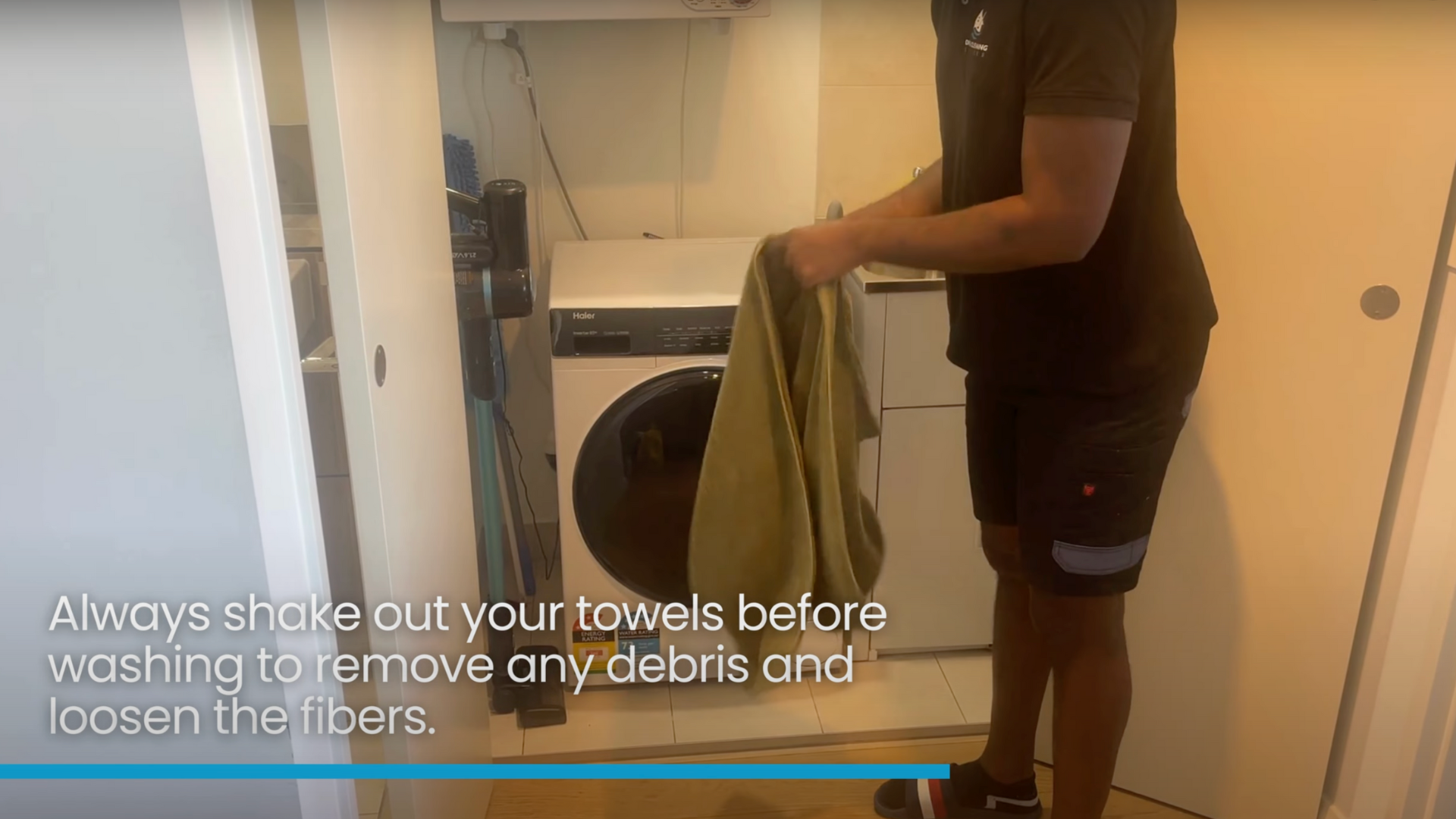
Always shake out towels before placing them in the washer.
This removes debris and helps loosen the fibers, allowing for a more thorough clean.
Step 2: Wash Towels Separately
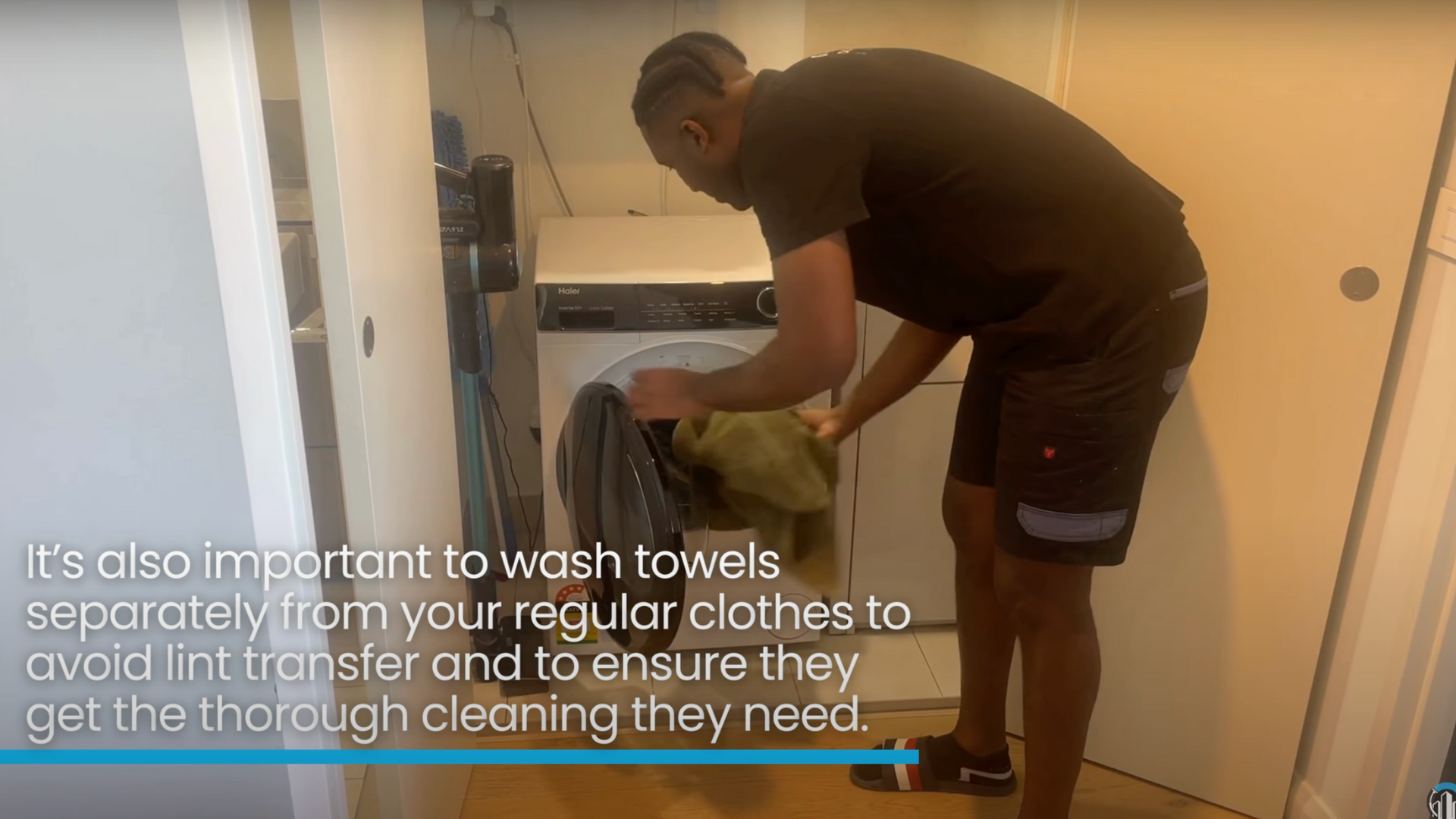
Towels should be washed on their own to avoid lint transfer and to ensure they receive a deep clean.
Washing them with regular clothes can reduce cleaning efficiency and cause fabric damage.
If towels are heavily soiled, apply a gentle stain remover to the stained areas before washing. This helps lift dirt and oils more effectively during the wash cycle.
Step 3: Use Less Detergent
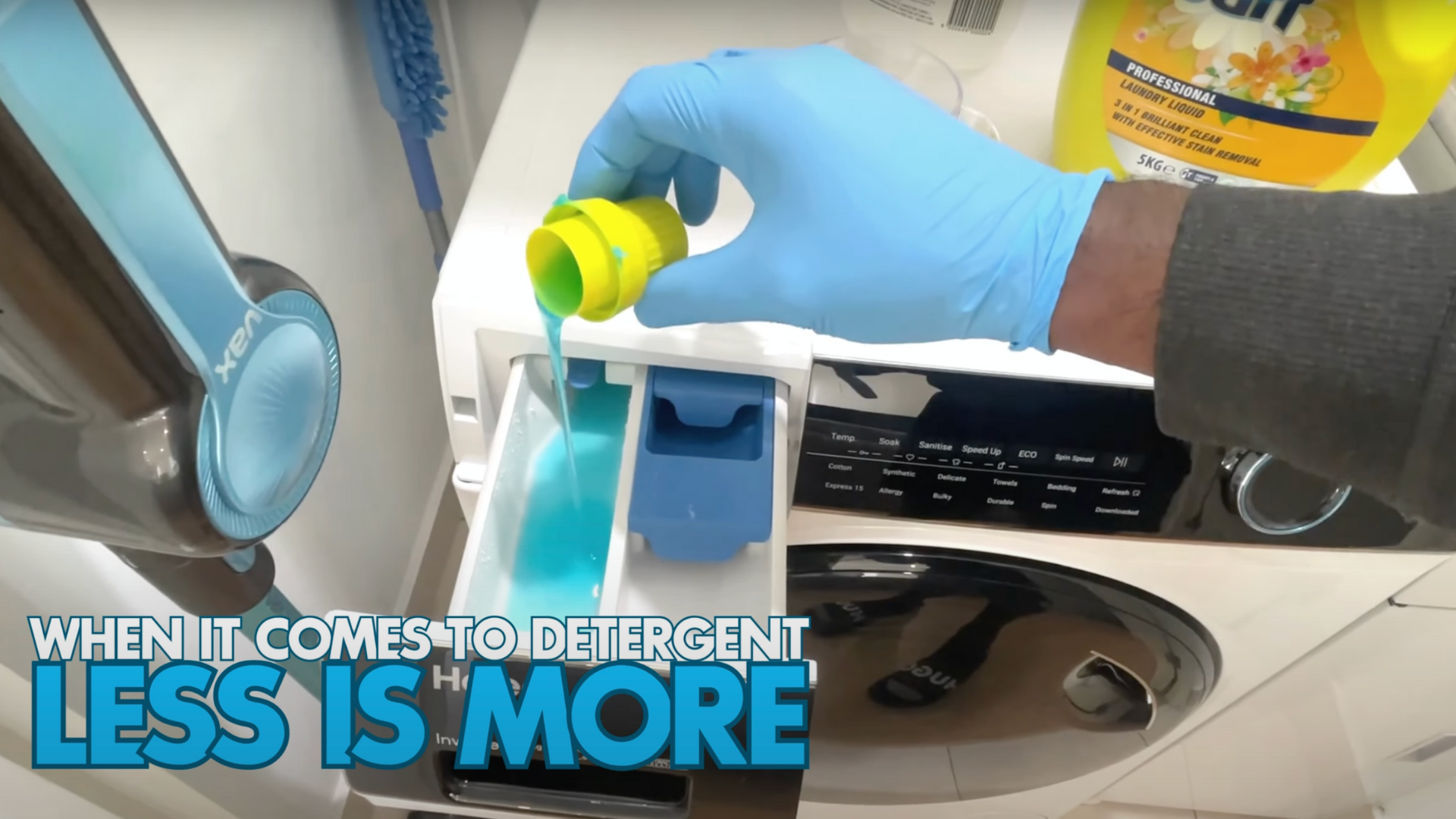
Too much detergent leads to residue buildup, making towels less absorbent and potentially smelly.
Use only a small amount of mild detergent to maintain softness.
Step 4: Add White Vinegar to the Rinse Cycle
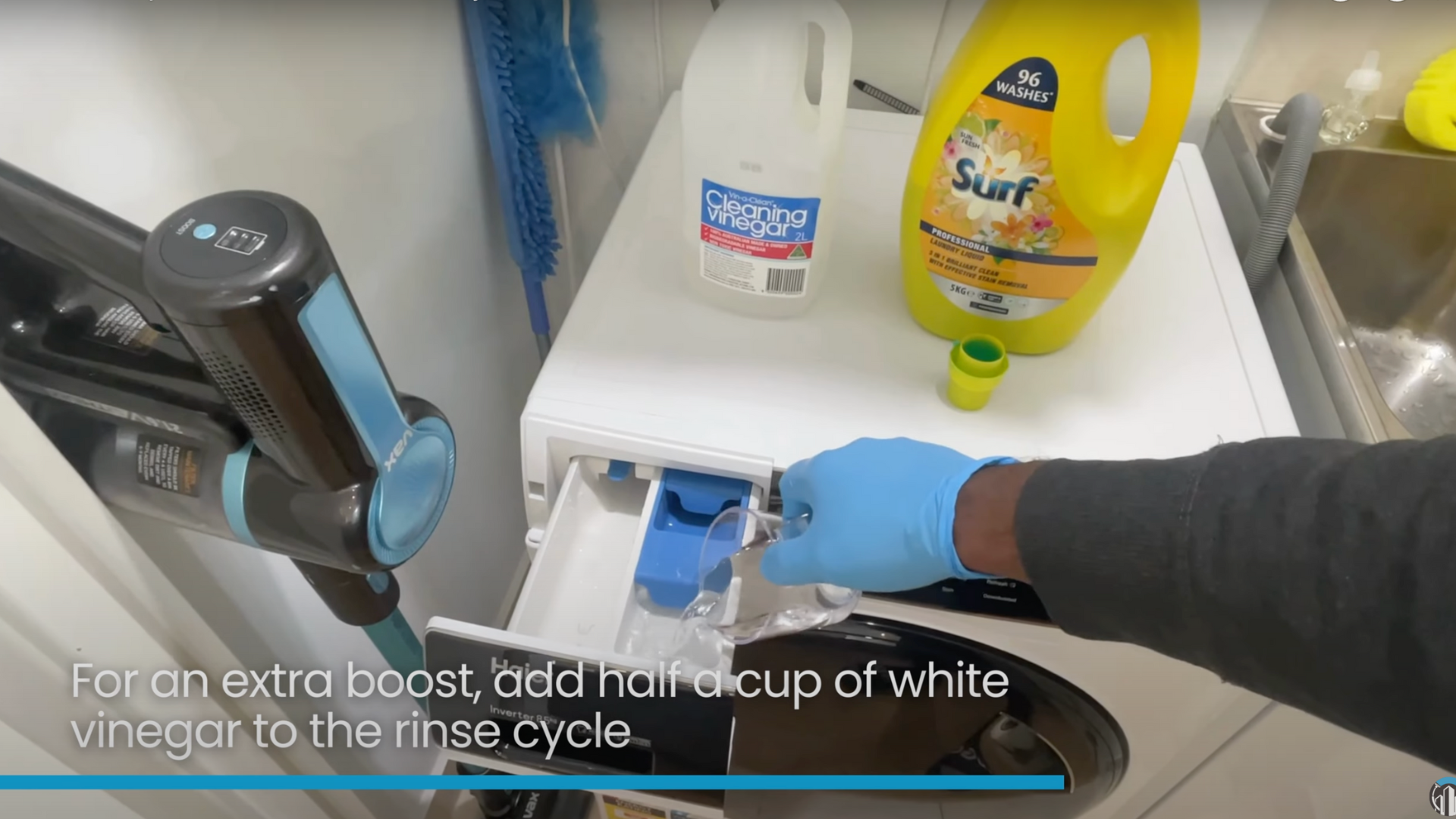
Pour half a cup of white vinegar into the rinse cycle to break down leftover detergent, soften the fabric, and neutralize any odors.
Step 5: Choose Warm Water
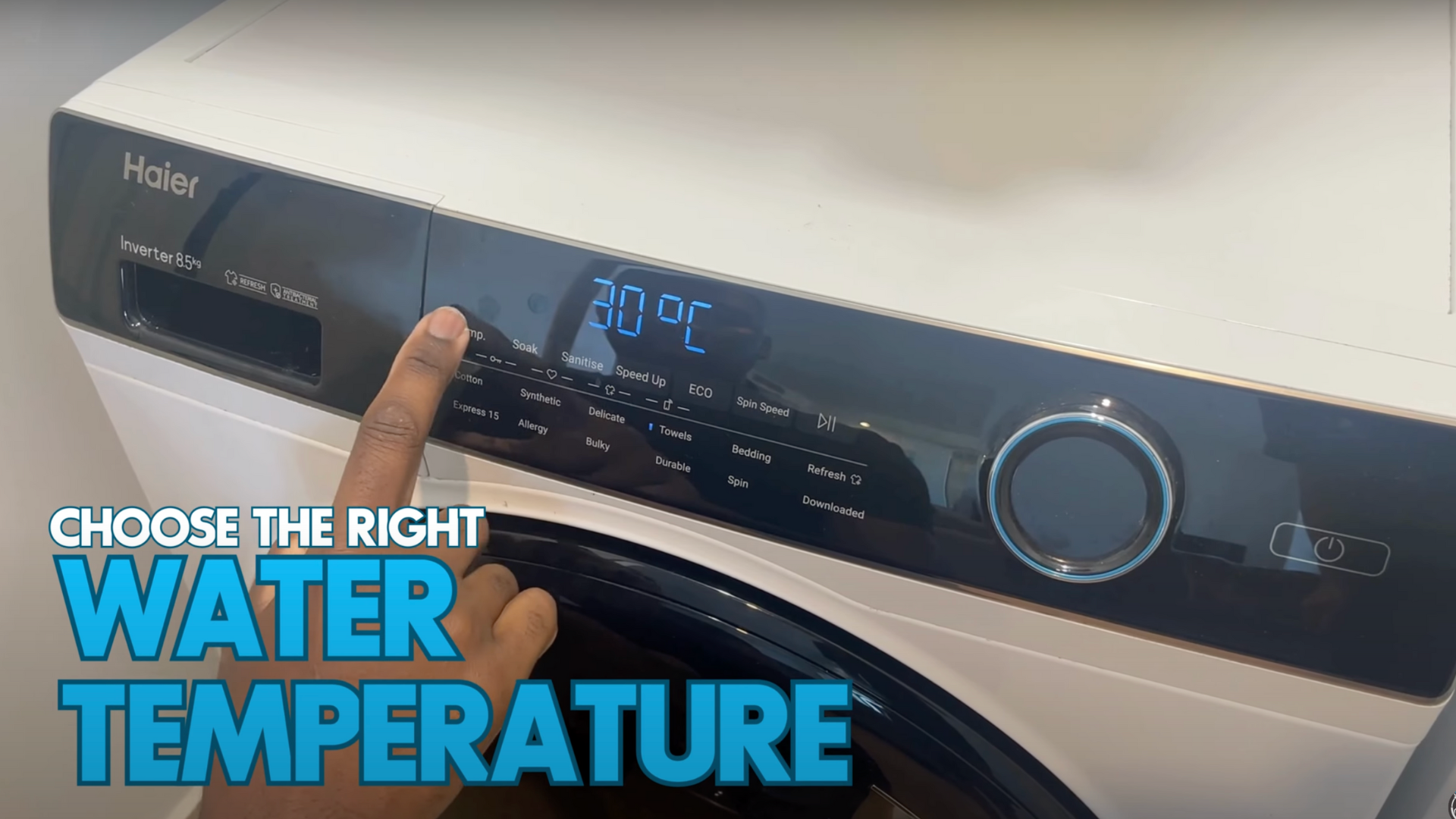
Warm water is ideal for cleaning towels without damaging the fibers.
While white towels can occasionally handle hot water to maintain brightness, colored towels should be washed in warm water to prevent fading.
Step 6: Dry with Care
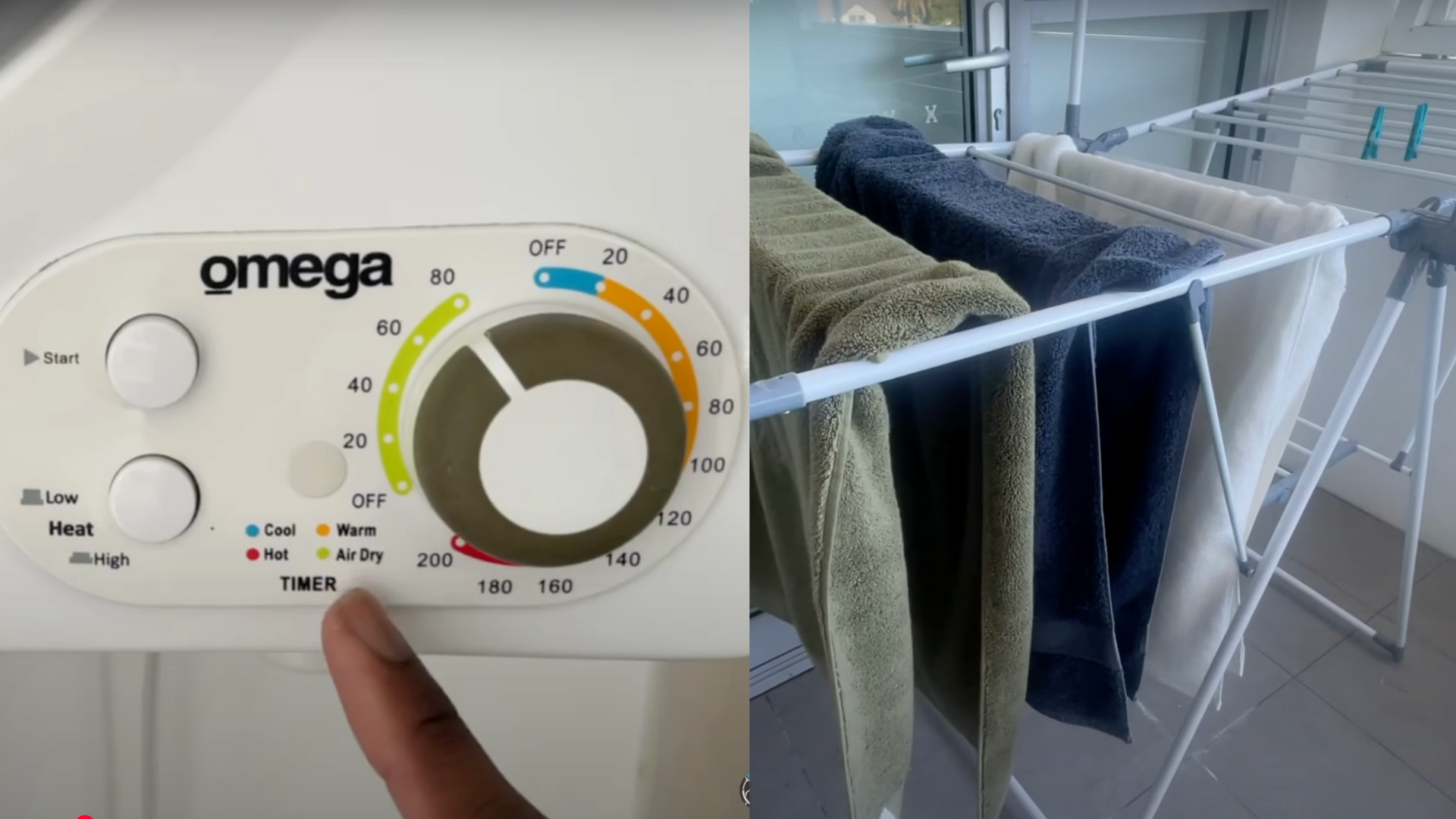
Tumble dry towels on a low or medium heat setting.
Avoid dryer sheets as they can coat fibers and reduce absorbency. Instead, toss in a few dryer balls to fluff the towels and speed up drying.
Air drying towels on a clothesline or drying rack is gentler on the fabric. Ensure towels are fully dry before storing them to prevent mildew and odors.
For a visual guide, refer to this video on how to wash towels by @cleaningmadeeasybyIvan on YouTube.
Optimizing Detergent and Additives for Soft Towels
The right detergent and additives can significantly impact your towels’ softness and absorbency.
Overuse of detergent leaves residue, which leads to stiffness and reduced absorbency. To avoid this, use only half the recommended amount.
Avoid fabric softeners, as they coat towel fibers and reduce their effectiveness. Instead, try white vinegar (¼ to 1 cup) once a month in the rinse cycle to remove residue.
Baking soda (½ cup) can also be added to neutralize odors and break down oils, keeping towels fresh.
How to Make Towels Fluffier?
If your towels are feeling a little flat or stiff, don’t worry, there are simple ways to bring back that soft, fluffy feeling. Below are some tips to help restore your towels’ fluff and absorbency:
- Use less detergent: Excessive detergent can leave residue, making towels feel stiff. Use a small amount of mild detergent.
- Add white vinegar: Once a month, add ½ cup of white vinegar to the rinse cycle to dissolve residue and keep towels soft.
- Try baking soda: Add ½ cup of baking soda during a warm wash to neutralize odors and refresh towels.
- Avoid dryer sheets: Dryer sheets coat fibers and reduce absorbency. Instead, use dryer balls or clean tennis balls to fluff towels.
- Shake towels: Give towels a good shake before and after air drying to loosen fibers and help them dry evenly.
These easy changes will help keep towels soft, fluffy, and comfortable.
Quick Wash Checklist
This simple checklist helps keep towel care on track, making each wash effective while preserving softness, absorbency, and longevity.
| Step | Action |
|---|---|
| Before First Use | Hot wash with mild detergent |
| Load Size | Fill ~80%, use palm test |
| Cycle Choice | Normal/Regular or Bulky/Towels |
| Water Temperature | White: hot; Colors: warm; Energy-saving: cold |
| Detergent | Mild, half-rinse dose |
| Additives | Monthly: ¼–1 cup vinegar; occasional baking soda wash |
| Spin Speed | Medium–high (800–1000 RPM) |
| Drying | Shake, dry on high, or air-dry with shaking; use dryer balls |
| Avoid | Fabric softener, overloading, overdrying |
Additional Care Tips
A few extra habits can make a big difference in towel softness, freshness, and durability.
- Wash new towels before first use to remove coating and boost absorbency.
- Avoid overloading the washer so towels can move freely and rinse thoroughly.
- Hang towels up fully after each use to prevent mildew and odors.
- Clean the washing machine regularly to avoid transferring buildup onto towels.
- Store towels only when completely dry to stop musty smells.
- Avoid ironing towels; it flattens the loops and reduces fluffiness.
- Use warm, not hot, water regularly to balance cleaning power and fabric care.
- Rotate towels in use so each set gets equal wear and stays in better shape longer.
Conclusion
Taking extra care when washing towels can make a big difference in how they feel and last.
Choosing the right washer settings, using the right amount of detergent, and avoiding harsh additives helps keep towels soft, fluffy, and absorbent.
Natural boosters like vinegar and baking soda can refresh even older towels.
From separating colors to drying with care, these small steps add up over time. I follow these habits to keep my towels in top condition, and it’s made laundry day much better.
If fluffy, fresh towels sound good, the results start with the wash. Got any tips? Drop a comment below and let’s share laundry tricks!
Frequently Asked Questions
How do I keep towels from getting stiff?
Avoid using too much detergent or fabric softener. Instead, add white vinegar to the rinse cycle and dry with dryer balls to keep fibers soft and fluffy.
Can I wash towels in cold water?
Yes, towels can be washed in cold water if using a quality detergent. However, warm water is more effective for regular cleaning, especially when removing oils and buildup.
What’s the best way to dry towels?
Tumble dry on low to medium heat with dryer balls, or air dry completely in a well-ventilated space. Make sure towels are fully dry before storing.

